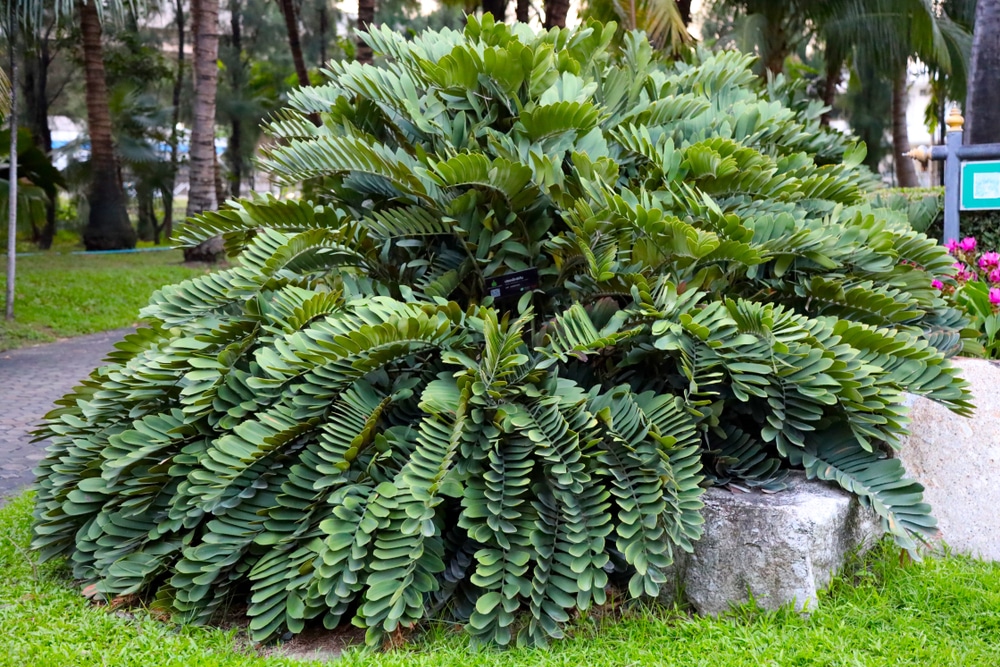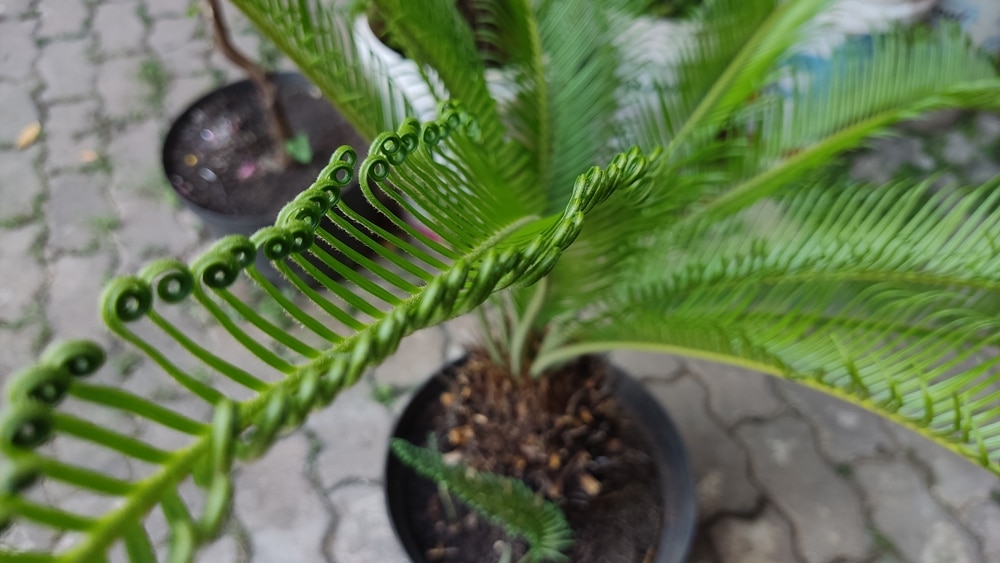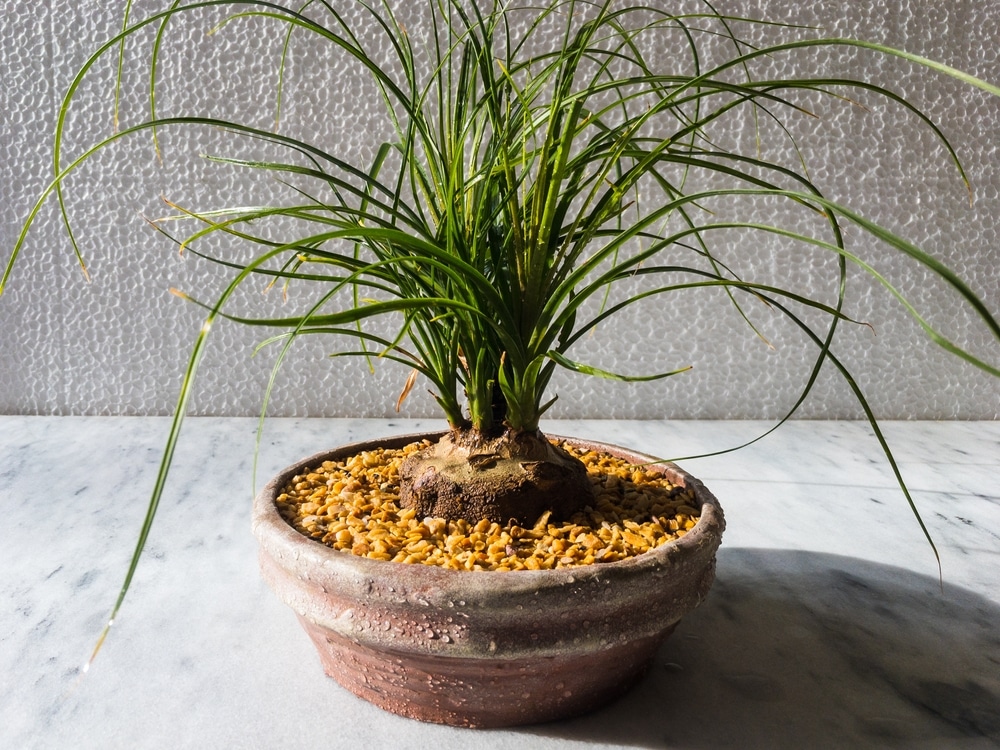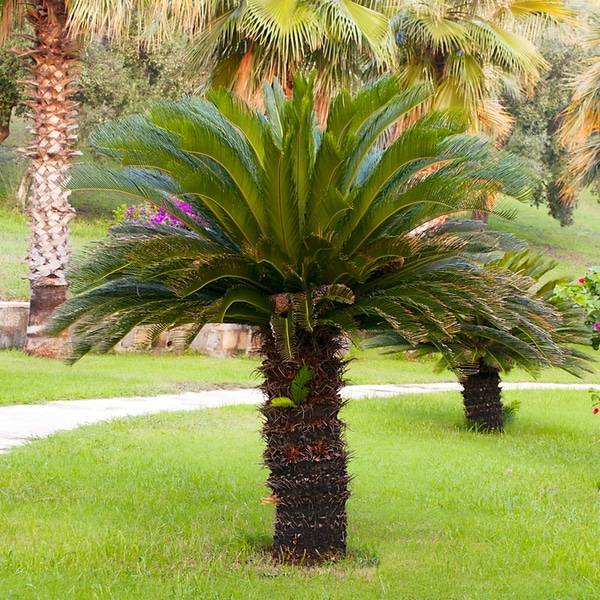Nearly everyone enjoys a sunny day on the beach, preferably spent underneath the shade of a beautiful palm tree. Many people would love to grow these trees in their yard, but the climate isn’t suitable. This article provides examples of plants that look like palm trees that you can grow at home.
Gardeners living in a warmer climate may be able to grow these plants outside, but most of these palm look-a-likes grow great in containers. Regardless of how you plant them, they are great options to bring a touch of the tropics to your home.
Banana Palm
Musa
Hardiness Zone: 9-10
The plant that produces your favorite fruit shares palm qualities like broad leaves. The banana palm is classified as an herbaceous plant with dozens of species. In general, bananas prefer moist soil and require fertilization and frequent watering. Certain varieties are suitable for growing indoors, so you can enjoy these palms outside their zone.
Many are fast-growing but don’t expect fruit right away. Usually, it takes a banana palm between eight and fifteen months to flower. Even when grown indoors, these plants produce fruits, making them an attractive and productive choice for your garden.
Cardboard Palm
Zamia furfurcea
Hardiness Zone: 9-11
An ancient plant with a dramatic spread, cardboard palms grow five to eight feet wide in ideal conditions. These plants have been around since the time of the dinosaurs. Despite appearances, they are more closely related to pines than palms. Once mature, they produce small cones instead of fruit.
Cardboard palms are slow growers, making them a suitable container option. Established plants are low maintenance. They don’t require much water and are slightly drought resistant due to the trunk at the center of the plant, providing the plant with stored moisture. Evergreen foliage creates beautiful fronds to add a pop of green to your space.
Gum Palm
Dioon spinulosum
Hardiness Zone: 9-11
Like the cardboard palm, the gum palm is a cycad, a plant species that has been around for a long time. Unfortunately, the gum palm isn’t as low maintenance as other members of the same division. This plant requires fertilizers to thrive, especially in the early stages of growth.
The feather-like leaves, which grow from a central trunk, make the gum palm a popular choice. They can be hard to find because of their endangered status. Make a plan before committing to this palm to meet its ideal conditions to be rewarded with evergreen foliage.
Ponytail Palm
Beaucarnea recurvata
Hardiness Zone: 9-10
While not a true palm, the ponytail palm shares many characteristics, including the singular truck of palms. These plants can grow up to 30 feet outside warm climates. Container-grown plants are much smaller but still provide a unique-looking choice, especially when the plant blooms.
Waiting for the ponytail palm to flower requires patience. Plants need to mature for at least ten years before producing sporadic blooms. The flowers are white and sprout from a tall branched structure at the top of the palm. Curved evergreen leaves top the palm, making this a lovely option when flowers aren’t present.
Sago Palm
Cycas revoluta
Hardiness Zone: 8-10
Another example of a “living fossil,” sago palms, are another type of cycad and one of the most popular. A few plants go by the name, but king sago palm, in particular, is an excellent option for ornament growth. These plants tolerate lower temperatures than other plants that look like palm trees and take well to containers.
It’s essential to note sago palms are poisonous when ingested, especially to animals. A household with many pets may benefit from a different option. This plant provides an attractive option for an appropriate home with fan-like leaves and a striking textured trunk.
Traveler’s Palm
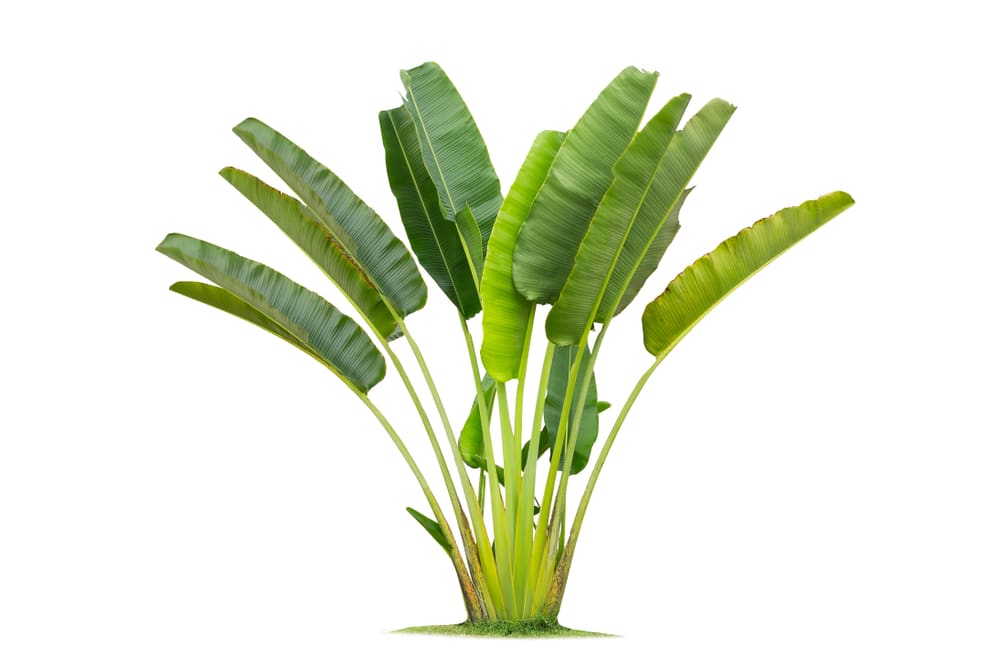
Ravenala madagascariensis
Hardiness Zone: 10-11
A variety of flower plants, traveler’s palm is native to Madagascar. These plants can be kept in containers but tend to outgrow them quickly. A spot in the ground where a traveler’s palm can receive full sun would be the best bet for this species.
People choose the traveler’s palm for its rapid growth and the fanning leaves emerging from a central stem. The plant likes sandy soil, so this is a good option for beach or desert conditions. Traveler’s palms grow very tall, up to 30 feet, so choose a spot for this plant with lots of room to grow.

